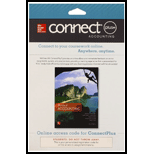
Louise Stinson, the chief financial officer of Bostonian Corporation, was on her way to the president’s office. She was carrying the latest round of bad news. There would be no executive bonuses this year. Corporate profits were down. Indeed, if the latest projections held true, the company would report a small loss on the year-end income statement. Executive bonuses were tied to corporate profits. The executive compensation plan provided for 10 percent of net earnings to be set aside for bonuses. No profits meant no bonuses. While things looked bleak, Stinson had a plan that might help soften the blow.
After informing the company president of the earnings
Some of the other items that Stinson is considering include (1) converting from straight-line to accelerated
Required
- a. Explain how each of the three numbered strategies for increasing the amount of the current year's loss would affect the stockholders’ equity section of the
balance sheet in the current year. How would the other elements of the balance sheet be affected? - b. If Stinson's strategy were effectively implemented, how would it affect the stockholders’ equity in subsequent accounting periods?
- c. Comment on the ethical implications of running the company for the sake of management (maximization of bonuses) versus the maximization of return to stockholders.
- d. Formulate a bonus plan that will motivate managers to maximize the value of the firm instead of motivating them to manipulate the reporting process.
- e. How would Stinson's strategy of overstating the amount of the reported loss in the current year affect the company’s current P/E ratio?
Want to see the full answer?
Check out a sample textbook solution
Chapter 8 Solutions
SURVEY OF ACCOUNTING-ACCESS
- I need guidance with this financial accounting problem using the right financial principles.arrow_forwardKindly help me with this General accounting questions not use chart gpt please fast given solutionarrow_forwardDuring the fiscal year 2023, Fenix Freight reported net sales of $38,900 million and a net income of $210 million. At the beginning of the year, the company had total assets of $30,400 million, and by the end of the year, total assets had decreased to $29,200 million. What was Fenix Freight's Return on Assets (ROA) for 2023?arrow_forward
- Please explain this financial accounting problem by applying valid financial principles.arrow_forwardI am searching for the correct answer to this financial accounting problem with proper accounting rules.arrow_forwardCan you help me solve this financial accounting question using valid financial accounting techniques?arrow_forward
- Can you solve this general accounting problem using accurate calculation methods?arrow_forwardLockheed Corp. has assets of $342,750 and liabilities of $156,830. Then the firm receives $45,620 from an investor in exchange for new stock, which the firm issues to the investor. What is the value of stockholders' equity after the investment?arrow_forwardI need help finding the accurate solution to this general accounting problem with valid methods.arrow_forward
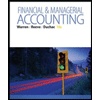 Financial & Managerial AccountingAccountingISBN:9781285866307Author:Carl Warren, James M. Reeve, Jonathan DuchacPublisher:Cengage Learning
Financial & Managerial AccountingAccountingISBN:9781285866307Author:Carl Warren, James M. Reeve, Jonathan DuchacPublisher:Cengage Learning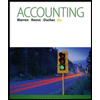 Accounting (Text Only)AccountingISBN:9781285743615Author:Carl Warren, James M. Reeve, Jonathan DuchacPublisher:Cengage Learning
Accounting (Text Only)AccountingISBN:9781285743615Author:Carl Warren, James M. Reeve, Jonathan DuchacPublisher:Cengage Learning Survey of Accounting (Accounting I)AccountingISBN:9781305961883Author:Carl WarrenPublisher:Cengage Learning
Survey of Accounting (Accounting I)AccountingISBN:9781305961883Author:Carl WarrenPublisher:Cengage Learning AccountingAccountingISBN:9781337272094Author:WARREN, Carl S., Reeve, James M., Duchac, Jonathan E.Publisher:Cengage Learning,
AccountingAccountingISBN:9781337272094Author:WARREN, Carl S., Reeve, James M., Duchac, Jonathan E.Publisher:Cengage Learning,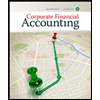 Corporate Financial AccountingAccountingISBN:9781337398169Author:Carl Warren, Jeff JonesPublisher:Cengage Learning
Corporate Financial AccountingAccountingISBN:9781337398169Author:Carl Warren, Jeff JonesPublisher:Cengage Learning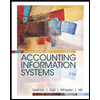 Accounting Information SystemsFinanceISBN:9781337552127Author:Ulric J. Gelinas, Richard B. Dull, Patrick Wheeler, Mary Callahan HillPublisher:Cengage Learning
Accounting Information SystemsFinanceISBN:9781337552127Author:Ulric J. Gelinas, Richard B. Dull, Patrick Wheeler, Mary Callahan HillPublisher:Cengage Learning





